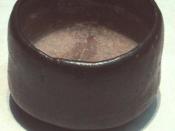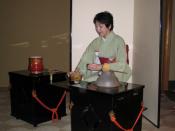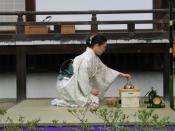Tea Ceremony - The Quintessence of Japan
"The tea ceremony requires years of training and practice ... yet the whole of this art, as to its detail, signifies no more than the making and serving of a cup of tea. The supremely important matter is that the act be performed in the most perfect, most polite, most graceful, most charming manner possible." (Hearn). This is a share from Lafcadio Hearn, who is an international writer, about the unique style of Japanese tea ceremony. Japaneses can absolutely consider tea ceremony as their honorable culture because of its long-standing history, its special meanings to Japanese, and its assertive utensils.
Japanese tea ceremony is a choreographic ritual of preparing and serving Japanese green tea. It is also called The Way of Tea in English. In Japanese, it is called Chanoyu, Chado, or Ocha. The whole process is not about drinking tea, but is about aesthetics.
There are two main types of Japanese tea ceremony: the thin tea (usucha) which accompanies with only confections, and the thick tea (koicha) which accompanies with full-course meals (Introducing). Japanese tea ceremony is extremely sophisticated in its process, but the general process can briefly include: boiling a pot of water, serving sweets to guests before the tea, mixing powdered bitter green tea (matcha) with hot water, serving tea to guests, collecting utensils and taking the guests to leave (The Japanese Full). During this process, the host and guests must follow a lot of rules or forms of etiquette in order to satisfy the aesthetic requirements of Japanese tea ceremony. The host has to make satisfying bowl of tea, lay the charcoal so that the water boils efficiently, provide a sense of warmth in the winter as well as coolness in the summer,


